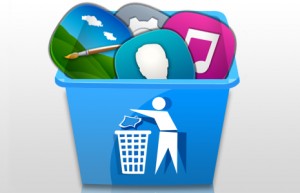 You’ve spent time and money developing your app, testing your app and promoting your app with the hopes that the market accepts it as a viable product to sustain a business but are continuing to come up against challenges which are causing you to spin your wheels and have second thoughts about getting into this space in the first place. The amount of time and effort that is being spent on this product is beginning to work against you but you are unwilling to give up the fight to succeed.
You’ve spent time and money developing your app, testing your app and promoting your app with the hopes that the market accepts it as a viable product to sustain a business but are continuing to come up against challenges which are causing you to spin your wheels and have second thoughts about getting into this space in the first place. The amount of time and effort that is being spent on this product is beginning to work against you but you are unwilling to give up the fight to succeed.
This scenario is common place for a lot of app publishers and often time never ends. But knowing when to stop the cycle and kill your app is an important part of the application lifecycle which will free you up not only from spending time and money which is not bringing in return but more importantly to allow you to focus on other ideas and projects which very well may be the winning ticket.
With any product comes a lifecycle – a beginning a middle and an end. Specifically for apps there are 4 common parts to the lifecycle:
- Pre-Launch: including concept, design, development, testing and marketing efforts that lead up to launch
- Launch: the introduction of your app to market
- Post-Launch or Maintenance: updates, continual marketing, support, revenue generation
- Decommission: decision to take down or no longer support the application
Decommissioning a product is not an easy decision and of course should not be made lightly. It is extremely important that you, as the business owner or app publisher, feel that you have done everything you could to set your app up for success. Often this means making small but significant investments in marketing and promotion to test the impact of increasing app discovery. It also often involves testing and tweaking your product features, quality and marketing strategy to see what is working and what is not. However, when you have reached the point when your efforts are not bringing in any return you need to start looking for the these tell-tale signs to start to consider moving on to the next big thing.
These are 3 key signs that after exhausting efforts, it may be time to move on to new opportunities.
1. Little, no or bad ratings and reviews
If your app has received less than 5 reviews, no reviews or an extremely low star rating in the app store this will have an impact on getting downloads. Today’s consumer is a social shopper and will look to download apps that have significant amount of reviews first and foremost. The more reviews you have the better. The second thing they will look at is the star rating attached the app. You want to make sure your app stays at a 3 star or better.
2. Revenue versus Cost to Support
If the amount of money you are making from your app continues to be insufficient for the support and marketing of the application whether this be through bug fixes, necessary platform upgrades or in the continual marketing any app requires to be successful, this is a definite warning sign that something is not working. An app is a business and a business needs to be at the very least profit neutral (if you have another job to support yourself that is) in order to continue.
3. Revenue versus Time to Support
Don’t forget to factor in your time. If your app is taking you away from revenue opportunities from your full-time gig or if this is your full-time gig then you need to ensure you are factoring in the time to manage and support your app. If the revenue your app has been generating is not covering all the operational costs including your time then you should take the time to re-evaulate your next steps.
From our own experience working with apps in app marketing and app strategy across platform and categories, the secret to a successful business is a great product, passion and persistence. We encourage you to do whatever it takes to find success with your product. We also encourage you to be realistic and pragmatic when it comes to the business of your app which is why we also feel the secret to success in the app business is knowing when to walk away.
